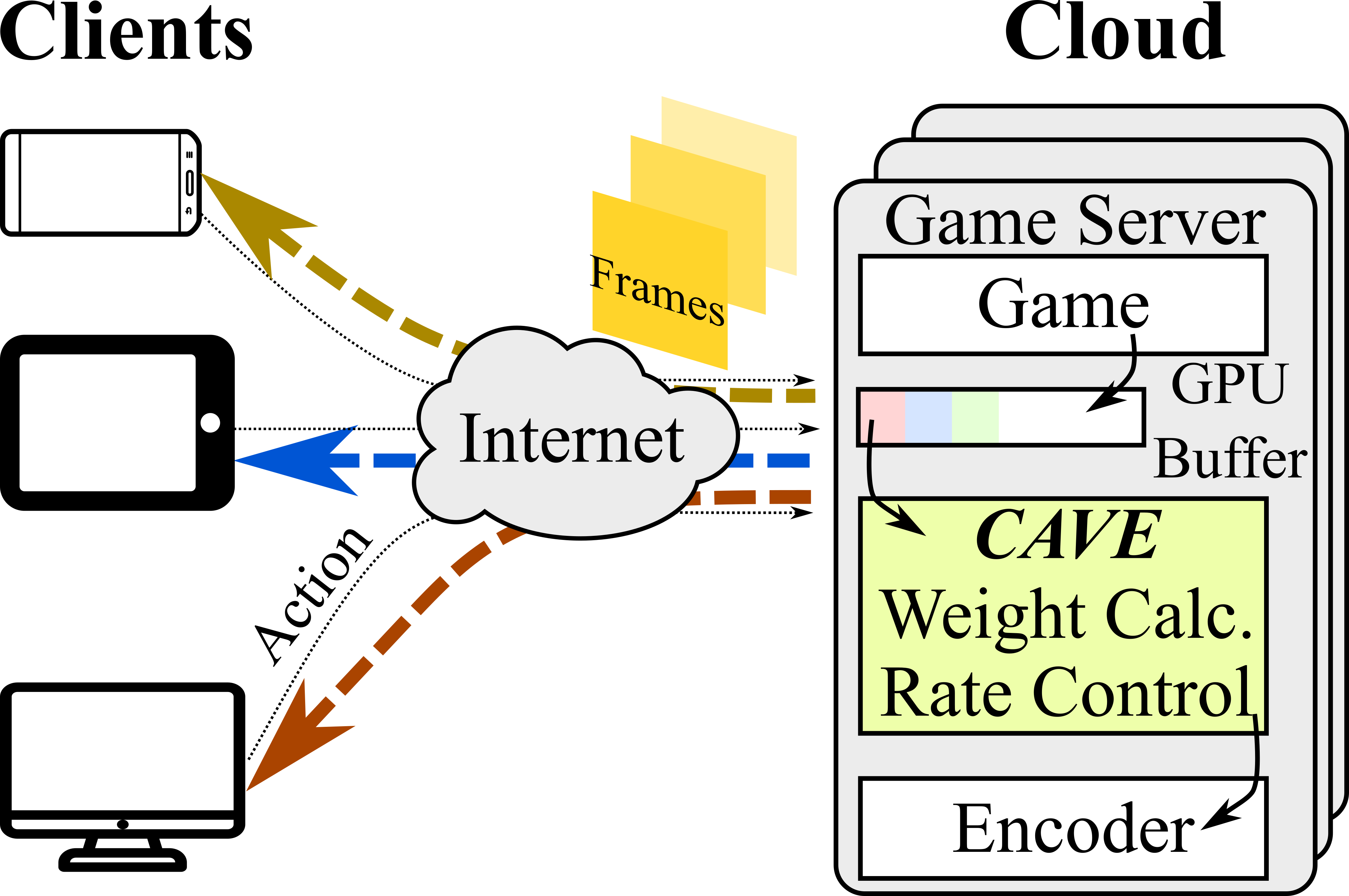Overview
Cloud gaming allows users with thin-clients to play complex games on their end devices as the bulk of processing is offloaded to remote servers. A thin-client is only required to have basic decoding capabilities which exist on most modern devices. The result of the remote processing is an encoded video that gets streamed to the client. As modern games are complex in terms of graphics and motion, the encoded video requires high bandwidth to provide acceptable Quality of Experience (QoE) to end users. The cost incurred by the cloud gaming service provider to stream the encoded video at such high bandwidth grows rapidly with the increase in the number of users. In this paper, we present a content-aware video encoding method for cloud gaming (referred to as CAVE) to improve the perceptual quality of the streamed video frames with comparable bandwidth requirements. This is a challenging task because of the stringent requirements on latency in cloud gaming, which impose additional restrictions on frame sizes as well as processing time to limit the total latency perceived by clients. Unlike many of the previous works, the proposed method is suitable for the state-of the-art High Efficiency Video Coding (HEVC) encoder, which by itself offers substantial bitrate savings compared to prior encoders. The proposed method leverages information from the game such as the Regions-of-Interest (ROIs), and optimizes the quality by allocating different amounts of bits to various areas in the video frames. Through actual implementation in an open-source cloud gaming platform, we show that the proposed method achieves quality gains in ROIs that can be translated to bitrate savings between 21% and 46% against the baseline HEVC encoder and between 12% and 89% against the closest work in the literature.
